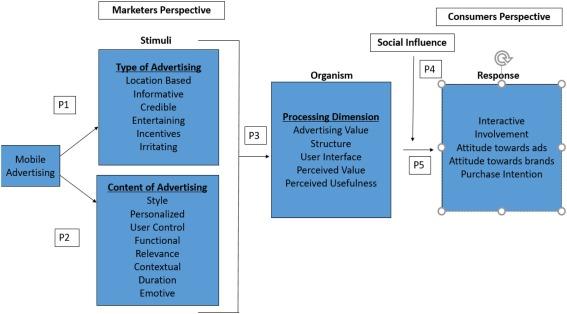Future-proofing Education: essential Strategies Policymakers Need for Lasting Impact
In a rapidly changing world, future-proofing education has never been more crucial. The need for education systems that are resilient,adaptable,and capable of preparing students for the unknown challenges of tomorrow is at an all-time high. Policymakers play a pivotal role in shaping these systems, laying the groundwork for generations to thrive in a dynamic digital age. This guide demystifies future-proofing education, offering actionable strategies, expert insights, practical tips, and case studies to help policymakers make a lasting impact.
Why Future-Proofing Education Matters
Education is no longer just about literacy and numeracy. The rapid evolution of technology, socio-economic shifts, and unpredictable global events—like pandemics and climate change—demand an education that prepares students for uncertainty. Future-proofing education ensures learning is relevant, resilient, and lasting long into the future.
- Workforce Readiness: Emerging industries demand new skills—digital literacy, critical thinking, creativity, and collaboration.
- Equity in Access: Innovative educational strategies help bridge the gap between urban and rural, privileged and underserved communities.
- flexibility and Resilience: Adaptive systems can better withstand disruptions, from economic crises to global health emergencies.
Essential Strategies Policymakers Can Use to future-Proof Education
Building an education system that stands the test of time involves a multifaceted approach, blending technology, policy, and human development. Here are the core strategies:
1. Embrace Digital Transformation
- Hybrid Learning Models: Enable a blend of online and face-to-face learning to maximize flexibility.
- digital Infrastructure: Invest in reliable internet access, software, and devices, especially in underserved areas.
- Teacher training: Equip educators with digital skills and pedagogical support for effective online teaching.
2. Foster lifelong Learning
- promote micro-credentialing and skills-based certification.
- Incorporate continuous professional development for teachers and administrators.
- Encourage self-directed, lifelong learning habits among students from an early age.
3. Prioritize Equity and Inclusion
- Ensure accessible education for students with disabilities and those from marginalized communities.
- Support language diversity and culturally responsive teaching.
- Address the digital divide through targeted funding and outreach programs.
4. Cultivate 21st-Century Skills
- Embedded critical thinking, problem-solving, communication, and creativity in curricula.
- Integrate STEAM (Science, Technology, Engineering, Arts, and Mathematics) subjects from early grades.
- Provide opportunities for real-world, project-based learning.
5. Encourage Collaboration and Stakeholder Engagement
- Involve educators, parents, students, and the private sector in policy development.
- Foster partnerships between schools, businesses, and community organizations.
- Leverage global networks to share best practices and innovations.
Benefits of Future-Proofing Education
Implementing these strategies yields wide-ranging benefits for society, the economy, and individuals:
- Workforce competitiveness: Well-prepared graduates contribute to innovation and economic growth.
- Social Mobility: Equitable access levels the playing field, promoting upward mobility.
- Resilient Communities: Communities equipped with 21st-century skills can adapt more readily to change.
- Personal Fulfillment: Lifelong learners lead more engaged, informed, and purposeful lives.
Practical Tips for Policymakers
- Conduct Needs Assessments: Regularly evaluate educational gaps via data-driven insights.
- Invest in Teacher Empowerment: focus on ongoing teacher training and well-being.
- Leverage Technology Thoughtfully: Select edtech tools that solve real problems and suit local contexts.
- Pilot and Scale: Test innovations in small settings before scaling system-wide.
- Encourage Policy Flexibility: Design policies that can adapt to unforeseen challenges and opportunities.
Case Studies: Success Stories in Future-Proofing Education
Finland’s Holistic Approach
Finland’s education system is renowned for its flexible curricula, teacher autonomy, and focus on well-being. Policymakers emphasize lifelong learning and real-world skills,ranking the country among the world’s moast future-ready education systems.
Singapore’s Digital transformation
Singapore has systematically integrated ICT in education, launched skills-based learning initiatives, and prioritized professional development. This approach has made Singaporean students among the top performers globally.
Rural India’s Digital Inclusion
India’s Digital India initiative focuses on closing the digital divide in rural regions. Programs like DIKSHA (Digital Infrastructure for Knowledge Sharing) offer digital content in multiple languages, empowering millions of teachers and students.
Firsthand Experience: Insights from Policymakers
“Implementing blended learning in our district opened new doors for collaboration and innovation. By involving both teachers and students in shaping the process, we ensured buy-in and a smoother transition. Listening to the ground realities is key to lasting policy impact.”
— Maria Rodriguez,Education Policy Director,São Paulo,Brazil
“A future-proof education system is one where every child,regardless of background,has a chance to shine. Inclusivity, ongoing teacher support, and tech access aren’t nice-to-haves—they’re essentials.”
— John Davies, Policy Advisor, UK Department of Education
Common Challenges and How to Overcome Them
- Funding Constraints: Leverage public-private partnerships to stretch education budgets and increase impact.
- Resistance to Change: Offer incentives, supportive training, and clear communication to ease transitions.
- Digital Divide: Prioritize equitable infrastructure distribution and community outreach programs.
- Data Privacy Concerns: develop robust policies for student data safety and cybersecurity.
Conclusion: Building a Lasting Legacy in Education
future-proofing education is a collective mission.With visionary leadership and evidence-based strategies, policymakers have the power to build learning ecosystems that not only withstand future disruptions but also flourish amidst them. By prioritizing flexibility, digital transformation, equity, and lifelong learning, we can ensure that education remains a powerful catalyst for social and economic transformation—today and for generations to come.

